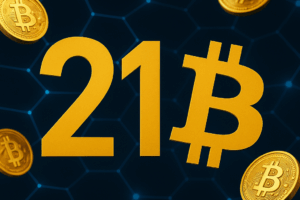Numerous rumors surround Bitcoin as the world’s first cryptocurrency. Over time, many myths about Bitcoin have also emerged – some of them not entirely without reason, but many do not hold up under closer examination. Or not anymore. Because the crypto market and the blockchain sector are in a constant state of change. And especially Bitcoin itself as a system has steadily evolved since its introduction in early 2009 by the inventor Satoshi Nakamoto. Therefore, many criticisms and myths that may have been justified in the system in the early years are now only partially or no longer sustainable.
Myth 1: Bitcoin is Prohibited as an Investment and Speculation Object
The warning that buying or trading the cryptocurrency is punishable and criminal bravely persists. This is – at least in most countries worldwide – a misunderstanding. Interested parties are certainly allowed to invest money in the coin and also make profits with it. Correct, however, that in many countries there is still a lack of clear regulations for crypto companies and regulatory provisions. This sometimes makes it easy for criminals, as the lack of state regulation supposedly opens doors for fraudsters. But this is also true now because of increasing licensing and controls as well as measures against fraud, money laundering and terrorist financing. Many states are gradually creating clear framework conditions for the rapidly growing market. Not to forget that the industry itself is increasingly ensuring transparency, security and trust.
Myth 2: BTC as an Instrument of Payment in the Dark Web
One of the biggest myths that still deters normal investors from investing in digital currencies is the assumption that Bitcoin is used exclusively by criminals and in the so-called Dark Web (also known as “DarkNet”). The fact is: The first cryptocurrency was really very popular with cybercriminals at the time. In the meantime, however, it is more likely the so-called Privacy Coins such as Monero that are preferred for illegal transactions and criminal offenses due to their very anonymous functionality. The increasing acceptance in trade and in many other areas of the real world has meant that Bitcoin has been losing its formerly negative image for years. Ultimately, Bitcoin is also not anonymous enough for perpetrators. With the necessary technical know-how, illegal activities within this blockchain can be traced.
Myth 3: the Supposedly High Power Consumption of Bitcoin Mining
First of all, it should be said: Yes, mining new bitcoins in the network by miners is actually associated with a fairly high energy consumption. Mining farms from China currently dominate the market. And there, electricity still often comes primarily from traditional energy sources. Coal in particular has a high priority in the People’s Republic. This is accompanied by a high level of environmental pollution. But the good thing is: a lot is happening worldwide. Mining is becoming increasingly energy-efficient and therefore more economical. The industry is rethinking. Many larger operators are settling in countries such as Canada or Norway, where wind and hydropower are gradually achieving higher market shares. This not only reduces the costs of mining. The burden on the environment is also decreasing. In addition to “green electricity”, there are technological advances in the devices that miners use for mining.
This is how Bitcoin is already much more sustainable today. And developments are continuing to progress, so that there will be further improvements in this area at the latest through measures already taking place or planned in China.
Myth 4: Only Computer Nerds Use Bitcoin and Co.
In the past, Bitcoin was in fact largely reserved for IT insiders. However, the increasing global interest is gradually allowing the currency and its competitors from the token and coin sectors to arrive in the so-called mainstream. In many countries there is now the possibility to buy bitcoins at ATMs (“ATM”) from a wide range of providers. Once again, Switzerland with its canton of Zug is leading the way as the “Crypto Valley”. In addition, the banking world is increasingly recognizing the opportunities of blockchain and similar technologies as well as Bitcoin and related currencies when it comes to fast and cheap transactions across national borders. Many other industries are also becoming aware of the use cases of blockchain or things like smart contracts when concluding contracts of various kinds. And so Bitcoin is gradually reaching private and commercial bank customers. The number of (online) retailers that accept Bitcoin is steadily increasing around the globe.
Myth 5: Storing Bitcoin is Too Difficult and Risky
Concerns were also justified on this point in the past. Over time, however, many different storage options have emerged. In the crypto world, there have been repeated campaigns in recent months calling on exchange customers to retrieve their BTC holdings from platform accounts (wallets) that are not always optimally protected and store them in their own digital wallets. Cold wallets, hardware wallets and many other services have emerged in recent years as better protection for Bitcoin savings. In this way, investors can protect their reserves very well against unauthorized access using personal keys, external devices and other tools. Exchanges and trading platforms, in turn, advertise protection mechanisms such as a guaranteed deposit guarantee in the event that funds disappear, for example, in the course of hacker attacks.
Myth 6: Bitcoin Accounts Can be Hacked
It is true that anyone who is too generous with their personal data continues to risk economic damage. Through a conscious handling of access data such as passwords and the use of the right technology, wallets are no less secure today than normal credit card, custody or bank accounts. Knowledge of how to deal with scamming, phishing and other virtual dangers also helps wallet holders to minimize the risks of fraud and Bitcoin theft in their own interest.
Myth 7: Bitcoin is not Real Money and Has No Real Value
While the world’s first cryptocurrency was at times more of a pure speculation object for very risk-loving investors, things look very different today. It is not without reason that several analysts now see Bitcoin as a kind of safe haven alongside gold and other asset classes. The comparison is quite resilient. From the beginning, the inventor limited the stock to 21,000,000 Bitcoin units. Thus, as with precious metals and ultimately all raw materials, it is an asset whose price in the long term will probably only know one direction due to increasing popularity: upwards. Due to the aforementioned greater acceptance in trade and the ever-increasing interest among institutional investors, the coin also has an ever-higher value. Regardless of what counterarguments skeptics and critics of digital currencies put forward. This also applies to Ethereum, Cardano (as a “system of science”) and several other leading coins.
Myth 8: Bitcoin is Too Volatile
The criticism of the excessive fluctuation range (volatility) of Bitcoin is still appropriate at times. Because in some moments there are very well significant setbacks or breakouts upwards within short periods of time. However, the economic crisis triggered by COVID-19 is the best proof that the currency can and will offer many opportunities for the future due to its independence from the traditional monetary system of central banks. The movements of the courses in the recent past also show that fluctuations of a serious magnitude are becoming increasingly rare. However, this does not mean that yield-hungry investors cannot lay the foundation for enormous profits at the right moment by buying and selling.
Our Conclusion on the Myths about Bitcoin
So we see that a whole range of criticisms can be at least partially, but often completely refuted if one considers the circumstances and developments in the market realistically and objectively. And in many areas, Bitcoin, along with its offshoots and competing systems, will continue to gain in importance in the coming years and be able to leave behind problems from the early phase of digital currencies.



